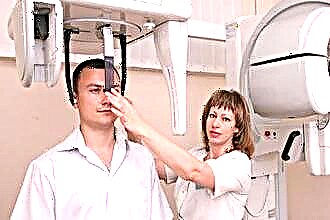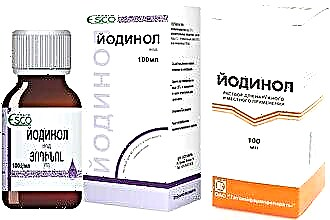Characterized by a prolonged period of high blood pressure, hypertension has no universal treatment. The most popular approach to fighting the disease is to take pills. There are also alternative methods of treatment, such are leeches for hypertension.

Stages of the disease
About a quarter of the population, according to the WHO, are susceptible to hypertension. This is a condition in which the pressure is in the range of 160 to 95 or higher.
The exact causes of primary hypertension have not been established. Treatment of this pathology is aimed directly at reducing pressure indicators.
Contributing factors are considered to be:
- hereditary predisposition;
- elderly age;
- the presence of bad habits;
- unbalanced diet with a predominance of fatty foods;
- psycho-emotional overstrain;
- work in hazardous industries.
Secondary hypertension is a consequence of disruption of the endocrine system, heart or liver. Treatment of this type of hypertension is primarily the normalization of the body's systems, which contribute to a long-term increase in pressure.
There is a gradation of the disease by stages:
- The initial stage is characterized by an increase in pressure during stressful situations and psychological stress. After a while, the indicators will return to normal.
- At the second stage of the disease, the situation is aggravated: the pressure rises more often, medications are required to reduce it. The left ventricle of the heart increases in size.
- Blood pressure at the third stage already constantly maintains indicators above normal. Serious complications are possible, such as heart and kidney failure, myocardial infarction. In this state, hirudotherapy for hypertension can only be used as an additional means, it cannot completely replace drugs.
Medical justification
The bloodletting method used for a long time has a common basis with the use of leeches. The purpose of this approach is to eliminate excess blood from the body.
The rationale is as follows:
- The pressure decreases due to a direct decrease in the amount of blood itself (bloodletting, which lowers the pressure by mechanical action).
- Oxygen saturation.
- The location of worms at reflex points that are associated with certain systems and organs.
- Introduction into the bloodstream of active substances that leeches release when they suck on the body.
- Increased blood flow.
It is important to note the difference between simple bloodletting and the use of leeches belonging to the subclass of annelids. The leech not only causes capillary bleeding, it also secretes some substances that enter the patient's bloodstream.
The beneficial substances secreted by the leech include:
- hirudin (reduces blood clotting, is the prevention of thrombosis);
- organelase, which enhances the regenerative abilities of blood vessels and the heart itself;
- destabilase (destroys blood clots);
- apyrase, which destroys plaque cholesterol.
The effectiveness of the method is confirmed by scientific studies with the participation of control groups of patients. So, according to studies conducted by the Novosibirsk Academy, an improvement was noted in 75% of patients with hypertension.
Indications and contraindications for hirudotherapy
When using a non-drug approach to treatment, the treatment of hypertension with leeches gives a good effect. It depends largely on the stage of the disease and related factors. The lower the stage of the disease, the greater the result is achieved.
At the first stage of hypertension, hirudotherapy gives a high percentage of successful treatment, when leeches replace the use of pills. The second stage is already worse amenable to the normalization of the condition when using this kind of bloodletting. Nevertheless, by combining such unconventional treatment with taking medications, the patient gets an improvement in his condition. The third degree is practically not amenable to treatment with hirudotherapy.
Among the indications for the treatment of cardiovascular disorders - not only hypertension, but also heart failure, cardiosclerosis.
If, in addition to hypertension, the patient has other diseases, then in some cases herudotherapy cannot be chosen as a method of treatment, it is imperative to consult with your therapist.
Contraindications:
- individual intolerance;
- low pressure;
- tuberculosis;
- pregnancy;
- anemia;
- menstruation;
- oncology;
- some blood diseases;
- postoperative conditions (especially on the brain and spine).
In very rare cases, patients may experience complications when using this method of treatment. In many ways, these manifestations depend on the correctness of the procedure and the care of the wounds after it.
Possible complications:
- Furuncles (pyoderma, etc.) - as a result of improper treatment of wounds after manipulation.
- Severe bleeding, which can be the result of placing a leech on a superficial vein, which is eliminated with a pressure bandage.
- Allergy, which occurs in 1 in 10,000.
It is important for the patient to know that slight redness, slight swelling and itching are normal reactions that can last up to three days. This manifestation is not a complication.
Leech setting scheme
 Hirudotherapy is a set of rules and techniques for working with leeches. For treatment, two types of worms are used:
Hirudotherapy is a set of rules and techniques for working with leeches. For treatment, two types of worms are used:
- pharmacy;
- medicinal.
Leeches have 3 jaws with chitinous teeth. It can suck up to 15 ml of blood at a time. Leeches used for medicinal purposes have a sense of smell, taste, and react to certain compounds. For example, for blood.
For the treatment to be effective, it is important to know where to place the leeches for hypertension, and the annelids themselves must be stored in proper conditions.
There are certain schemes for installing leeches, which depend on the specific disease. Based on this, the setting points and their number are determined. It is generally accepted to place leeches where soreness is most evident. When treating internal organs, the projection of these organs onto the body becomes the point of placement of worms.
The doctor, by palpation, determines the painful points of the leeches. The number of leeches, determined by the type of disease and stage, is 2-15 leeches.
The scheme for setting leeches for hypertension is determined by the doctor, but the general technique is as follows:
- Placement behind the ears (2-3 pieces for each).
- 2-3 individuals per Michaelis diamond area.
- On the tailbone 1-2 pcs.
Other places of placement of leeches are also possible, depending on the accompanying hypertensive state of painful manifestations. The area behind the ears eliminates headaches, improves hearing and vision. There are points on the forearms, the impact on which relieves headaches, discomfort in the occipital region and neck. At the level of 3-4 thoracic vertebrae there are active points for the treatment of neurasthenia. There are places along the midline of the head, the impact on which helps with headaches.
Important! To avoid complications, older patients do not place worms on the sacral rhombus in the pelvic region.
To install worms are used:
- cotton wool;
- patch;
- a swab with iodine, alcohol or hydrogen peroxide;
- tweezers;
- a vessel with a narrow neck;
- clean bank;
- the medicinal leeches themselves.
 The placement process requires careful execution and accuracy. Placing leeches:
The placement process requires careful execution and accuracy. Placing leeches:
- The required number of worms is transferred with tweezers to the jar.
- The patient's skin is disinfected.
- With tweezers (or in another way), each leech is transferred to the desired area of the body.
- The place of replanting is covered from above with a prepared vessel with a narrow neck, pressing it tightly against the skin.
- After the leech has sucked (up to three minutes), the vessel can be removed.
- Repeat the procedure for all points of influence.
Painful sensations in the patient are present only in the first minutes of the procedure.
The exposure time is about a third of an hour, up to 30 minutes. After a lapse, the leech increases significantly in size, falls off by itself or is removed. The site of the bite may bleed, as thinning components got into it, so it should be treated with a swab with hydrogen peroxide or alcohol. From above, the tampon is fixed with an adhesive plaster.
After application, leeches must be destroyed. The fallen worm is dipped in a disinfectant solution for an hour, after which it is destroyed.
A course of treatment
Typically, treatment with leeches is focused on the duration of up to 10 sessions, between which a gap is made, which is determined by the doctor. In the presence of certain concomitant diseases of hypertension, the duration of the course can be increased or supplemented with other active points. After a full course, before the next, a break of up to four months is recommended.
Number of annelid worm installation sessions:
| Installation area | Recommended number of sessions |
|---|---|
| Behind the ears | 3 |
| Michaelis rhombus | 2 |
| Coccyx | 3 |
The use of leeches is quite justified in the treatment of hypertension. It relieves the condition, eliminates complications, and is relatively inexpensive. When choosing this method, a careful choice of a medical institution and a qualified specialist is required, who will take into account all the characteristics of the patient and study the anamnesis.



